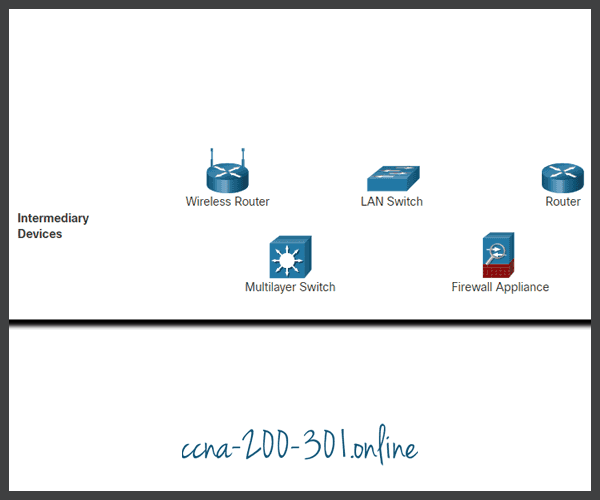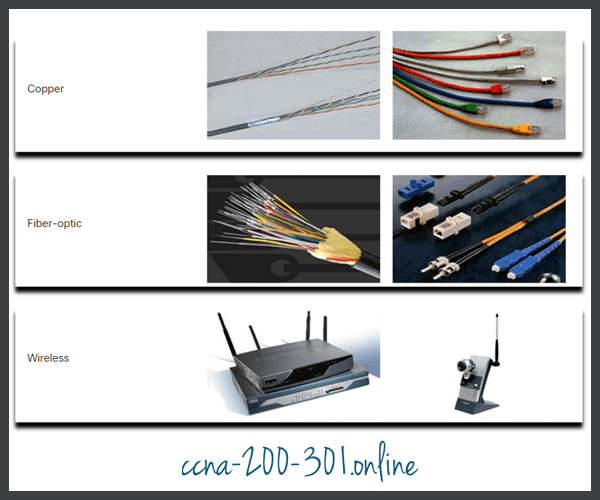Network Components
Summary
This topic explain how host and network devices are used .Start learning CCNA 200-301 for free right now!!
Table of Contents
Host Roles
If you want to be a part of a global online community, your computer, tablet, or smart phone must first be connected to a network. That network must be connected to the internet. This topic discusses the parts of a network. See if you recognize these components in your own home or school network!
All computers that are connected to a network and participate directly in network communication are classified as hosts. Hosts can be called end devices. Some hosts are also called clients. However, the term hosts specifically refers to devices on the network that are assigned a number for communication purposes. This number identifies the host within a particular network. This number is called the Internet Protocol (IP) address. An IP address identifies the host and the network to which the host is attached.
Servers are computers with software that allow them to provide information, like email or web pages, to other end devices on the network. Each service requires separate server software. For example, a server requires web server software in order to provide web services to the network. A computer with server software can provide services simultaneously to many different clients.
As mentioned before, clients are a type of host. Clients have software for requesting and displaying the information obtained from the server, as shown in the figure.

An example of client software is a web browser, like Chrome or FireFox. A single computer can also run multiple types of client software. For example, a user can check email and view a web page while instant messaging and listening to an audio stream. The table lists three common types of server software.
| Type | Description |
|---|---|
| The email server runs email server software. Clients use mail client software, such as Microsoft Outlook, to access email on the server. | |
| Web | The web server runs web server software. Clients use browser software, such as Windows Internet Explorer, to access web pages on the server. |
| File | The file server stores corporate and user files in a central location. The client devices access these files with client software such as the Windows File Explorer. |
Peer-to-Peer
Client and server software usually run on separate computers, but it is also possible for one computer to be used for both roles at the same time. In small businesses and homes, many computers function as the servers and clients on the network. This type of network is called a peer-to-peer network.

The advantages of peer-to-peer networking:
- Easy to set up
- Less complex
- Lower cost because network devices and dedicated servers may not be required
- Can be used for simple tasks such as transferring files and sharing printers
The disadvantages of peer-to-peer networking:
- No centralized administration
- Not as secure
- Not scalable
- All devices may act as both clients and servers which can slow their performance
End Devices
The network devices that people are most familiar with are end devices. To distinguish one end device from another, each end device on a network has an address. When an end device initiates communication, it uses the address of the destination end device to specify where to deliver the message.
An end device is either the source or destination of a message transmitted over the network.

Intermediary Devices
Intermediary devices connect the individual end devices to the network. They can connect multiple individual networks to form an internetwork. These intermediary devices provide connectivity and ensure that data flows across the network.
Intermediary devices use the destination end device address, in conjunction with information about the network interconnections, to determine the path that messages should take through the network. Examples of the more common intermediary devices and a list of functions are shown in the figure.

Intermediary network devices perform some or all of these functions:
- Regenerate and retransmit communication signals
- Maintain information about what pathways exist through the network and internetwork
- Notify other devices of errors and communication failures
- Direct data along alternate pathways when there is a link failure
- Classify and direct messages according to priorities
- Permit or deny the flow of data, based on security settings
Network Media
Communication transmits across a network on media. The media provides the channel over which the message travels from source to destination.
Modern networks primarily use three types of media to interconnect devices, as shown in the figure:
- Metal wires within cables – Data is encoded into electrical impulses.
- Glass or plastic fibers within cables (fiber-optic cable) – Data is encoded into pulses of light.
- Wireless transmission – Data is encoded via modulation of specific frequencies of electromagnetic waves.

Criteria to consider when choosing network media:
- What is the maximum distance that the media can successfully carry a signal?
- What is the environment in which the media will be installed?
- What is the amount of data and at what speed must it be transmitted?
- What is the cost of the media and installation?
Different types of network media have different features and benefits. Not all network media have the same characteristics, nor are they all appropriate for the same purpose.
Ready to go! Keep visiting our networking course blog, give Like to our fanpage; and you will find more tools and concepts that will make you a networking professional.





